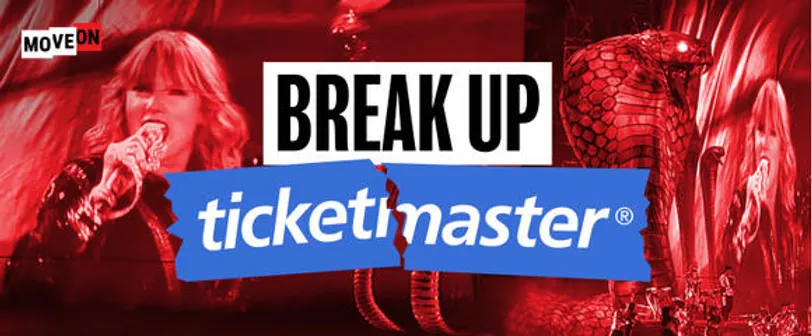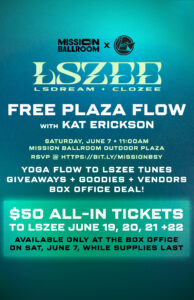Article by: Jessica Duncan
There has been rampant discussion recently about the cost and difficulty of securing tickets to see live events by popular artists. For example, consider the uproar over Taylor Swift’s The Eras Tour, as well as EDM examples like Skrillex’s 5-hour solo Red Rocks show and Pretty Lights’ upcoming Soundship Spacesystem Tour.
It wasn’t always so difficult to nab tickets to big events like this, so how did we get here?
To begin, we’ll have to go back to 2010 when Ticketmaster, the largest ticketing company in the world, merged with LiveNation, the world’s largest concert promoter and venue owner. This effectively created a monopoly for live event ticketing because Ticketmaster is now the exclusive ticketing platform for any venue LiveNation owns or any artist or event LiveNation has a contract with.
Altogether, the ticketing behemoth is now estimated to own 70% of the market share for ticketing and event venues. This doesn’t leave much room for competition and most artists don’t have the leverage to consider other options for ticketing platforms and venues. According to LiveNation’s website, they sell 500 million tickets per year and all of those are through Ticketmaster.
Since this merger in 2010, ticket prices have increased by 50%. The merger isn’t the only reason for this, although it is an important factor. One of the main reasons is the cost of touring has increased by 30 – 40% over the same period. Part of this is due to inflation; the cost of traveling has increased because of higher prices for gas, lodging, flights, and food. Santigold wrote a great post on Twitter about this at the end of 2022 when she canceled her Holified Tour.
Another part of the equation is that the production costs for shows have also increased. For example, someone like Excision travels with a custom stage setup, extra sound systems, a video wall, and more lights and lasers than most people could ever fathom — and all of this equipment needs to be set up and torn down at each tour stop. This doesn’t even account for artists like Taylor Swift who also has set pieces, props, backup dancers, and live musicians to pay for. All the production technology, and the people to set up and run it all, does not come cheap.

Compounding the problem in recent times is that an artist almost solely relies on ticket sales and selling branded merchandise to make money. Before the streaming era of Spotify, artists made most of their money from physical music sales, whether that was vinyl, cassettes, or CDs. An artist would earn anywhere from 10 – 25% from each physical copy sold based on their contract.
With the advent of streaming, music consumers rarely purchase music anymore unless they are vinyl collectors. Now artists make just $0.003 to $0.005 per stream. That means that even popular songs with one million streams only earn about $4,000. The need for Spotify to increase its pay rate for artists is another article topic for another day.
Economics stemming from capitalism is another reason why prices have increased — the classic principle of supply and demand. After 2020 when live events were canceled for over a year, there was a lot of pent-up demand from people wanting to go to shows again. The same was true for artists, who missed out on their main source of income for a considerable amount of time.
More demand led to increased prices thanks to the new dynamic pricing model that adjusts ticket prices based on demand. This is the same model that airlines and hotels use where prices are adjusted during busy travel seasons. The more people want to buy tickets, the higher Ticketmaster can sell them for. This is why premium Taylor Swift tickets were showing up for tens of thousands of dollars — because millions of people were trying to buy them.
On top of the increased dynamic pricing are all the exorbitant fees Ticketmaster and other ticketing sites charge. Fees can range from 20 – 100% of the face value ticket price. Just keep in mind that the face value ticket price goes toward paying for the marketing of the event, the production, the venue, and finally the artist. For most venues or promoters to break even on a show, they need to sell 80% of the tickets available.
So if the face value goes to offset event costs, then where do all of those fees go? One of the most common fees is a “service fee,” and this is basically how Ticketmaster pays all of its employees and covers its costs as a business. Another add-on is a “convenience fee,” which is charged for buying a ticket online instead of in person at a box office. Another typical fee is a “processing fee,” which according to Ticketmaster “offsets the costs of ticket handling, shipping, and support.” Don’t get it confused with the “delivery fee,” which is charged when a physical ticket or wristband is sent out via UPS or FedEx. There’s also the possibility of a “facility fee,” which goes directly to the venue. And don’t forget about the taxes — Uncle Sam has to get his share too! With all these fees, it is no wonder why a $50 ticket can easily turn into an $85 ticket at checkout.
For cheaper resale tickets, one can look to sites like SeatGeek, Gametime, and TickPick as good options. These services have lower fees and the tickets sold on their sites are verified genuine tickets, so there is no concern for buying a fake ticket and being denied entry. Keep in mind, these are resale marketplaces, so one might still pay a bit above the original face value of the ticket.
So despite the higher pricing and all the additional ticketing fees, you decide you’re willing to pay upwards of $150 a ticket just to see one of your favorite artists — well now you still have to fight to be able to buy it. You sign up for the presale, you get in the queue right when you get the prompt on as many devices as possible: phone, laptop, ipad, desktop, you name it, all with the hope of being permitted to buy tickets before the event sells out. However, the minute you get in, you see the dreaded message: “There are currently no tickets available.”
“How is this possible?!” you exclaim. “They just went on sale less than a minute ago!” The answer is a limited number of tickets and a large number of automated bots.

Before tickets even go on sale, a number of them are set aside for the artist, their agent, the venue, the promoter, the marketing department, the label, and of course, the sponsors. After that, there are specialty presales before the general sale that are typically gated by a password. There are usually artist and/or venue presales, as well as presales for specific credit card holders. After the presale, there is roughly 25% of the available tickets remaining for the general sale. If you thought trying to get tickets during the presale was hard, the general sale is basically impossible. There can’t be that many people buying tickets to all of these shows, right?! Unless you’re Taylor Swift, then there really are that many people.
The answer is that the ticket buyers aren’t all real people at all, many of them are automated bots running for ticket resale platforms like Drew’s Tickets. These resellers have multiple accounts using multiple emails running state-of-the-art software, while most fans typically only have one account. Of course, these automated bots also run software to buy groups of tickets, usually maxing out the purchase limit. Ticketmaster is aware of this problem, but since it also collects fees from ticket resales, they have turned a blind eye to the issue with bots since it ultimately generated more profits.
How can we work together to fix these ticketing issues? Well, everyone can play a part, including artists, ticketing services, and us fans. Artists can choose to play venues that don’t use Ticketmaster as their ticketing platform. Or if they are stuck with Ticketmaster, they can do what 80s indie band The Cure did: they opted out of using dynamic pricing, made tickets non-transferable, and used the Verified Fan service to try to keep prices low so actual fans were the ones buying them. Verified Fan sends “a random selection of registered fans a unique code that allows them to enter the presale and purchase tickets before the general public.” The goal of this is to try to stop bots from using presale codes.
AXS is another large ticketing company with rights to some landmark venues like Colorado’s Red Rocks and New York City’s Terminal 5. One thing it’s been doing lately is scalper scrubs — going through and canceling orders that were bought using bots. They did this for Skrillex’s Red Rocks show and set up a lottery to try to give as many people as possible the chance to buy the tickets that were recovered from the bots.
As a fan, we can choose to buy hard-copy tickets at a physical box office, if that option is still available. This helps to avoid fees and ensures you get a genuine ticket. In some cases, you might even have better odds than trying to buy online. Another option is to get political — support the Department of Justice’s antitrust investigation into Ticketmaster and join the Break Up Ticketmaster coalition.
Both Ticketmaster and LiveNation have been the subject of investigations before. They have repeatedly violated the terms of the consent decree that allowed the merger to happen without consequence. You can also reach out to the Federal Trade Commission and ask them to enforce the BOTS (Better Online Ticket Sales) Act that was passed in 2016. This act prohibits the sale of tickets that were obtained using bots to be resold on the secondary market. One more action you can take is to encourage your congressional representatives to pass the Junk Fee Prevention Act, which would help put an end to unnecessary and excessive fees.
Fees and bots have become huge issues, and it’ll require a lot of people working together to solve them. If more artists use their power to take steps like The Cure did, more fans let venues know they want to see more scalper scrubs, and the government holds Ticketmaster/LiveNation accountable, then we can start to combat the issue of unaffordable and inaccessible event tickets and get back to doing what we love — enjoying live music!













